Packaging contents
NiPoGi supplies a power cable, a VESA adapter and an HDMI cable with the E2 Mini PC.
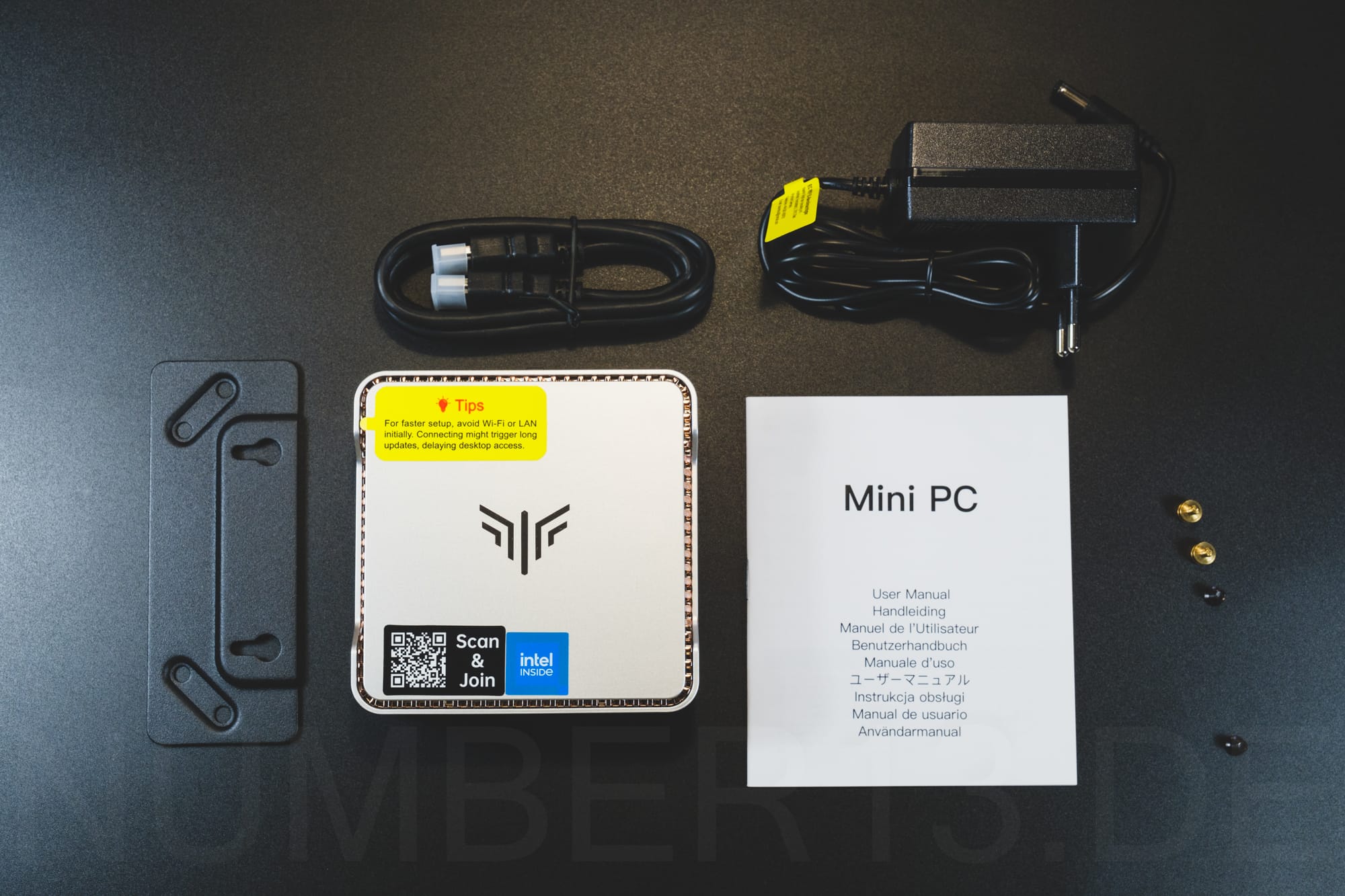
Technical data
The mini PC that NiPoGi provided us with for testing has the following technical data:
- Processor : Intel Processor N150, 4 cores, 3.6GHz max. (6W TDP)
- RAM : 16GB 3200MHz DDR4 (Rayson RS16GS4C16)
- SATA SSD : Rayson RS512GSSD310 512GB
- Power supply : 12V 2.5A (AD0301-1202500GB)
- Network: Realtek RTL8111/8168 Gigabit LAN
- Wi-Fi adapter: Realtek RTL8821CE WiFi 5 802.11ac (433 Mbps)
- USB: 2 x USB 3.2 Gen 2, 2 x USB 2.0
- GPU: Intel® UHD Graphics (24 EU - 1.0 GHz)
- Monitor ports : 1 x HDMI 2.0, 1 x DisplayPort 1.4
- Audio connections : Headphone jack
- Expansion : 1 x M.2 2280 compatible with NVMe PCIe 3.0 x4 or SATA (occupied)
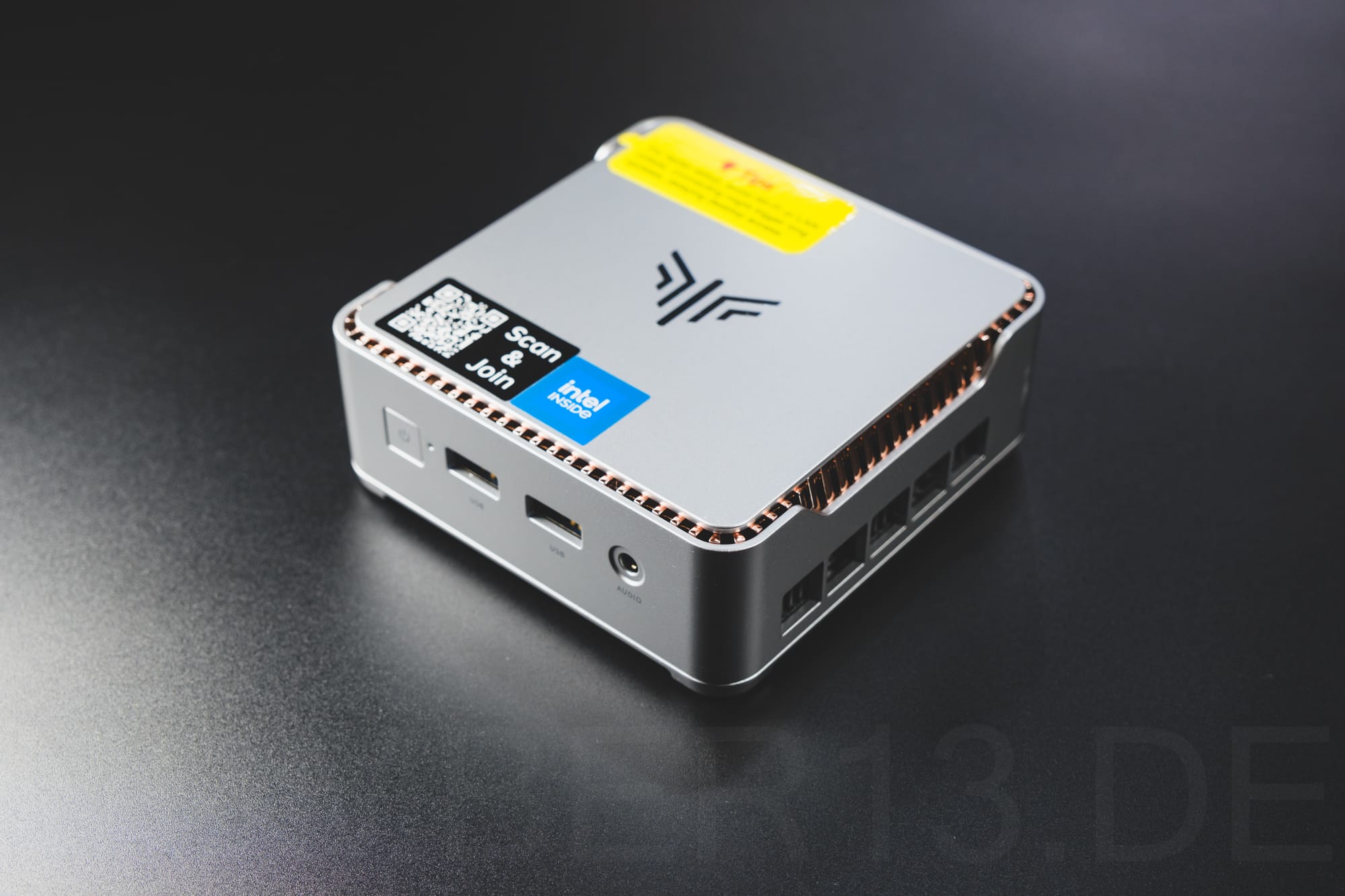
First impression
The NiPoGi E2 is designed as an office PC. It comes with an Intel N150 processor, which is the successor to the Intel N95, N97, N100 and N200 generation.
For entry-level office use, it is well equipped with 16 GB RAM and a 512 GB SATA SSD.
The mini PC comes with Windows 11 Pro, which allows access via Remote Desktop, for example.
Case and Build Quality
The housing of the NiPoGi E2 is, like the E1, very small and can therefore be mounted on the desk or behind the monitor to save space.
The casing of the E2 is made entirely of plastic, and the copper-colored cooling fins are just for decoration. However, there is nothing to complain about in terms of workmanship.
As always, the stickers are a point of criticism because they are difficult to remove and are not particularly pretty.
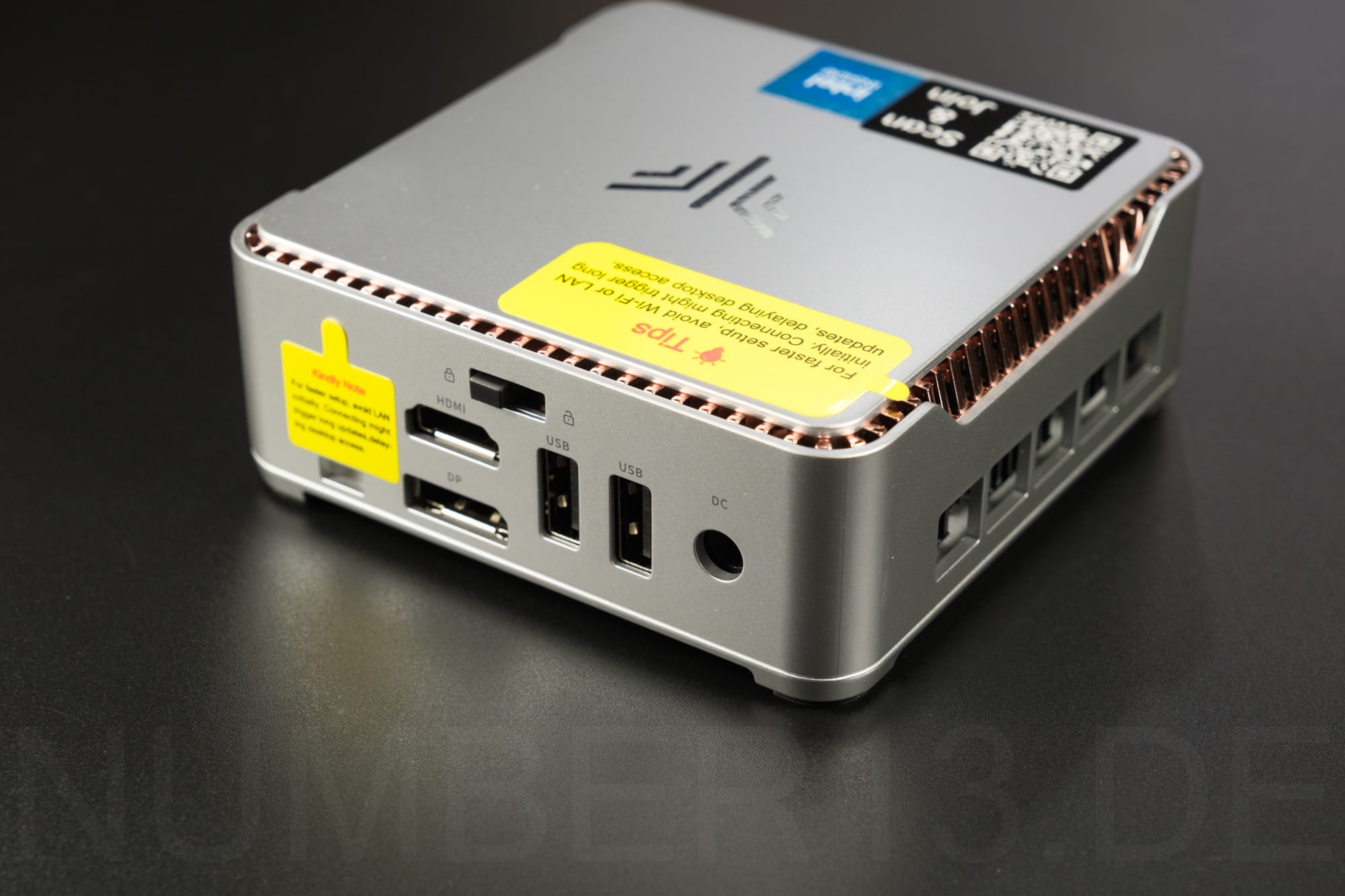
The base plate is also used as an air inlet. The attached rubber pads effectively dampen mechanical vibrations, e.g. from the fan. The warm air is discharged via two side air outlets.
The most important connections for daily use are located on the front of the case. Additional connections can be found discreetly on the back.
Pre-installed software
The NiPoGi E2 comes with Windows 11 Pro 64-bit.
There are no drivers available for download directly from NiPoGi. There is also no support page. Apart from the driver for the Intel Serial IO GPIO Host Controller, everything else is provided by Windows Update.
Cooling system and noise
The cooling of the NiPoGi E2 is identical to that of the E1, so the results are the same. The mini PC can be described as silent when under low load. The fan can only be heard with your ear on the case.
At higher or maximum load, the mini PC is barely noticeable from a distance and is one of the quietest mini PCs.
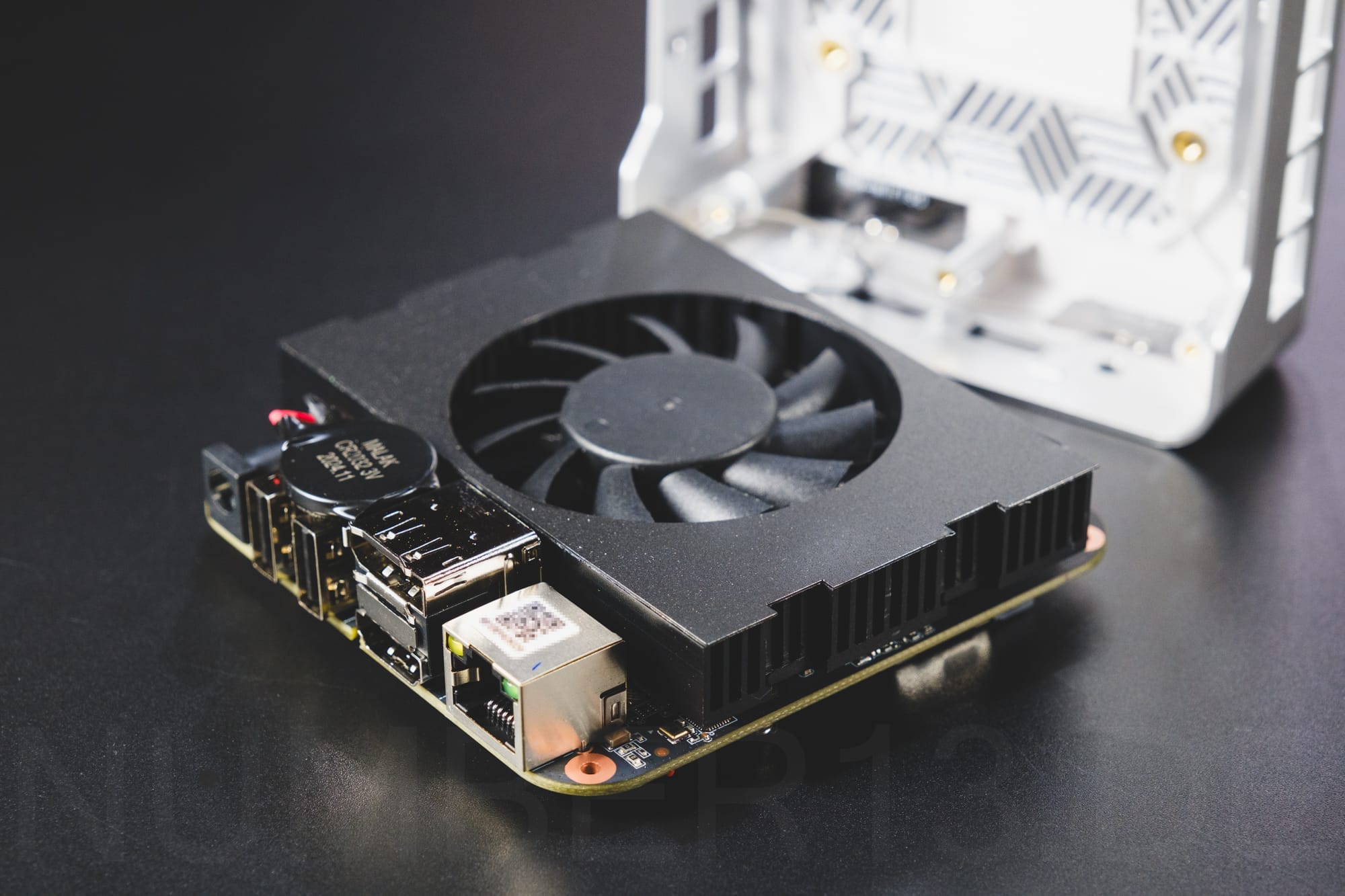
The large heat sink does not pose a major challenge with the N150 processor with 6 W TDP – the temperatures always remain below 80 °C.
The M.2 SSD is not taken into account in the cooling concept.
Maintenance
Vacuuming the side air outlets and the lower air inlets should be sufficient maintenance.
If you want to clean the mini PC more thoroughly, you can disassemble it relatively easily. All you have to do is loosen the screws under the rubber pads. Then you have to loosen another screw that connects the case to the mainboard.
To change the SSD or RAM, simply unlock the cover using the switch on the back. You can then remove the cover, making the replacement easy.
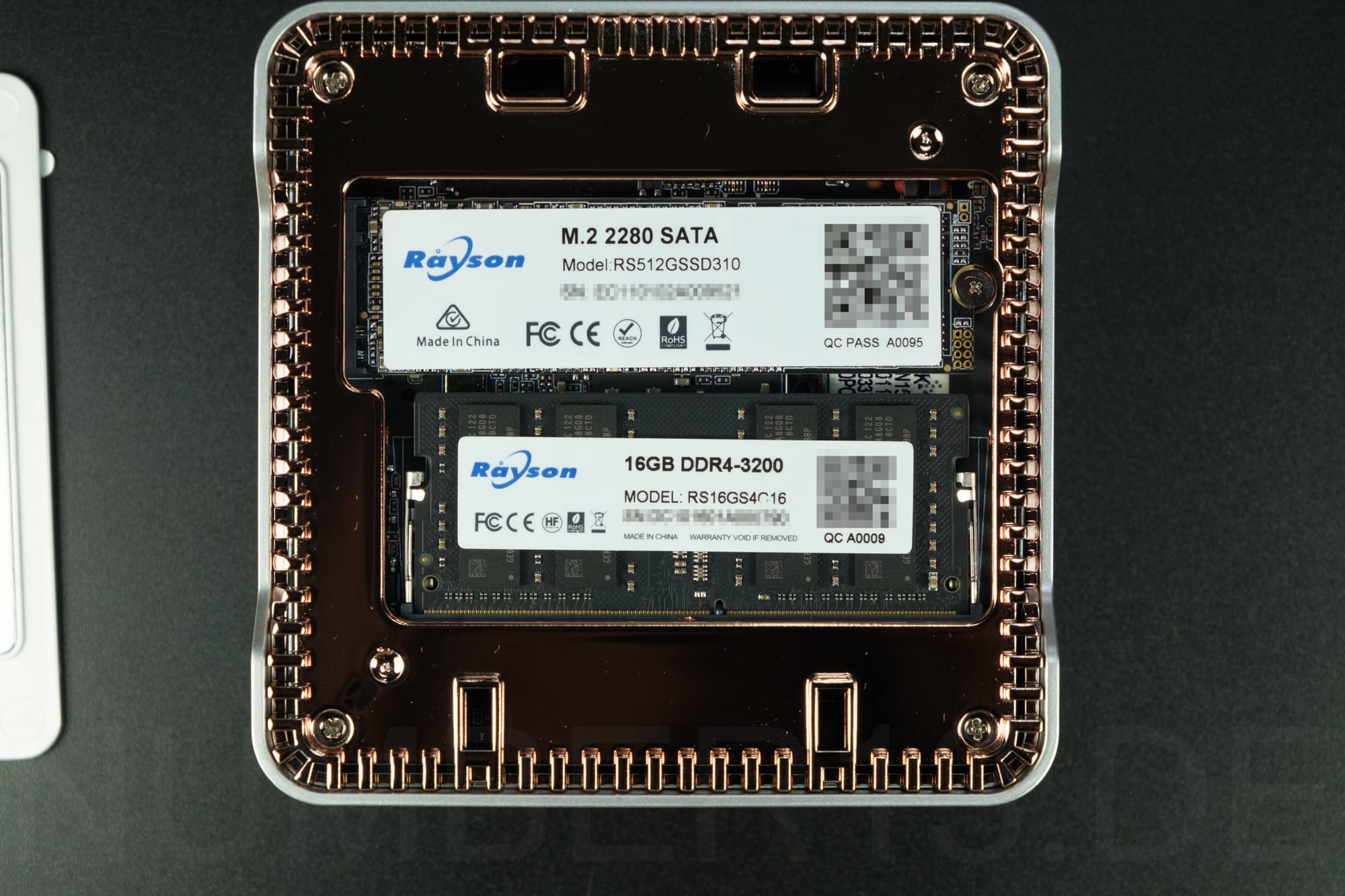
Office performance
With 16 GB of RAM and an Intel N150 processor, the NiPoGi E2 is sufficiently dimensioned for most office applications.
Office applications that are less CPU-intensive can be used without any problems. It is only with CPU-intensive processes such as Windows updates that you notice that everything takes a little longer.
Even a multi-monitor setup with several applications open at the same time can be operated easily and smoothly.
Video streaming, YouTube, Netflix and Co.
Since Intel's iGPU supports all common video formats, playing multiple videos with a resolution of up to 8K is easy and smooth.
Geekbench

SSD benchmark
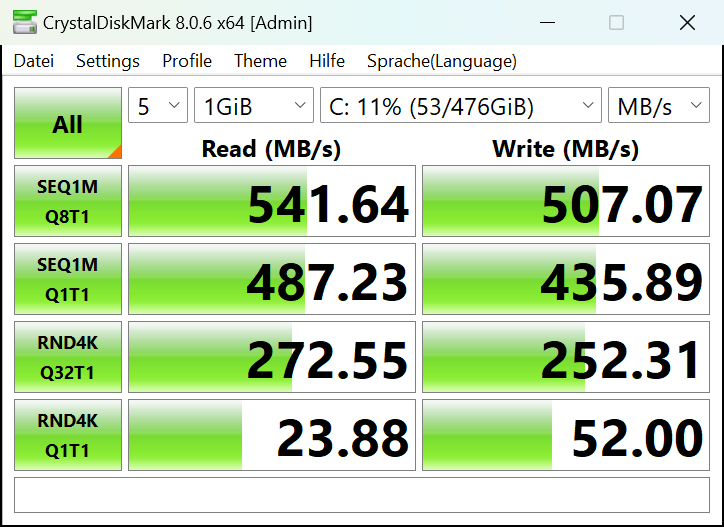
Creative performance
Programs such as Photoshop, Lightroom, Blender or video editing programs can be used without any problems.
When exporting photos, rendering images or transcoding videos, you must expect longer waiting times and slight stuttering if the hardware support of the Intel iGPU is not used.
Gaming performance
The NiPoGi E2 with Intel N150 is about 10-20% faster than the NiPoGi E1 thanks to the slightly faster RAM. However, this does not change much about its generally low gaming performance.
Gaming performance is generally very low with the Intel N series, as this does not correspond to the intended use of the Intel N processors. The graphics card is severely limited and the single-core performance is often too low.
A good use for the NiPoGi E2 is streaming or cloud gaming, as even streams in 4K are easily supported.
It is therefore recommended to use it as a device for Steam in-home streaming or cloud gaming services such as GeForce Now if you want to play graphically demanding games.
To compare the graphics performance, here are the values from the GFXBench benchmark.
| Test (Fps) | Intel N150 (NiPoGi E2) | Intel N100 | NiPoGi E1 - N150 | Intel Core i9-12900H | AMD Ryzen™ 9 7940HS |
|---|---|---|---|---|---|
| 4K Aztec Ruins High Tier Offscreen | 5.6 | 4.4 | 5.1 | 17.9 | 29.8 |
| Aztec Ruins High Tier Offscreen | 13.3 | 10.4 | 11.8 | 45.2 | 64.7 |
| Aztec Ruins Normal Tier Offscreen | 36.5 | 28.7 | 30.8 | 125.8 | 149.6 |
Networking capabilities
The NiPoGi E2 from our test was equipped with a Realtek Gigabit Ethernet adapter and a Realtek RTL8821CE Wi-Fi 5 adapter.
The performance of the Wi-Fi adapter was tested with a Wi-Fi 6 access point. At a distance of 5 meters, the mini PC achieved a maximum data transfer rate of 320 Mbit/s in the speed test.
When using a network share, a constant transfer rate of an average of 38 MB/s was achieved.
The Realtek Gigabit Ethernet adapter consistently achieves maximum speed.
Expandability and connection options
The RAM and the M.2 NVMe SATA SSD, which can also be replaced with an M.2 NVMe SSD (PCIe 3.0 x4), are replaceable or expandable.
The maximum speed of such a PCIe 3.0 x4 SSD is then approximately 4 GB/s.
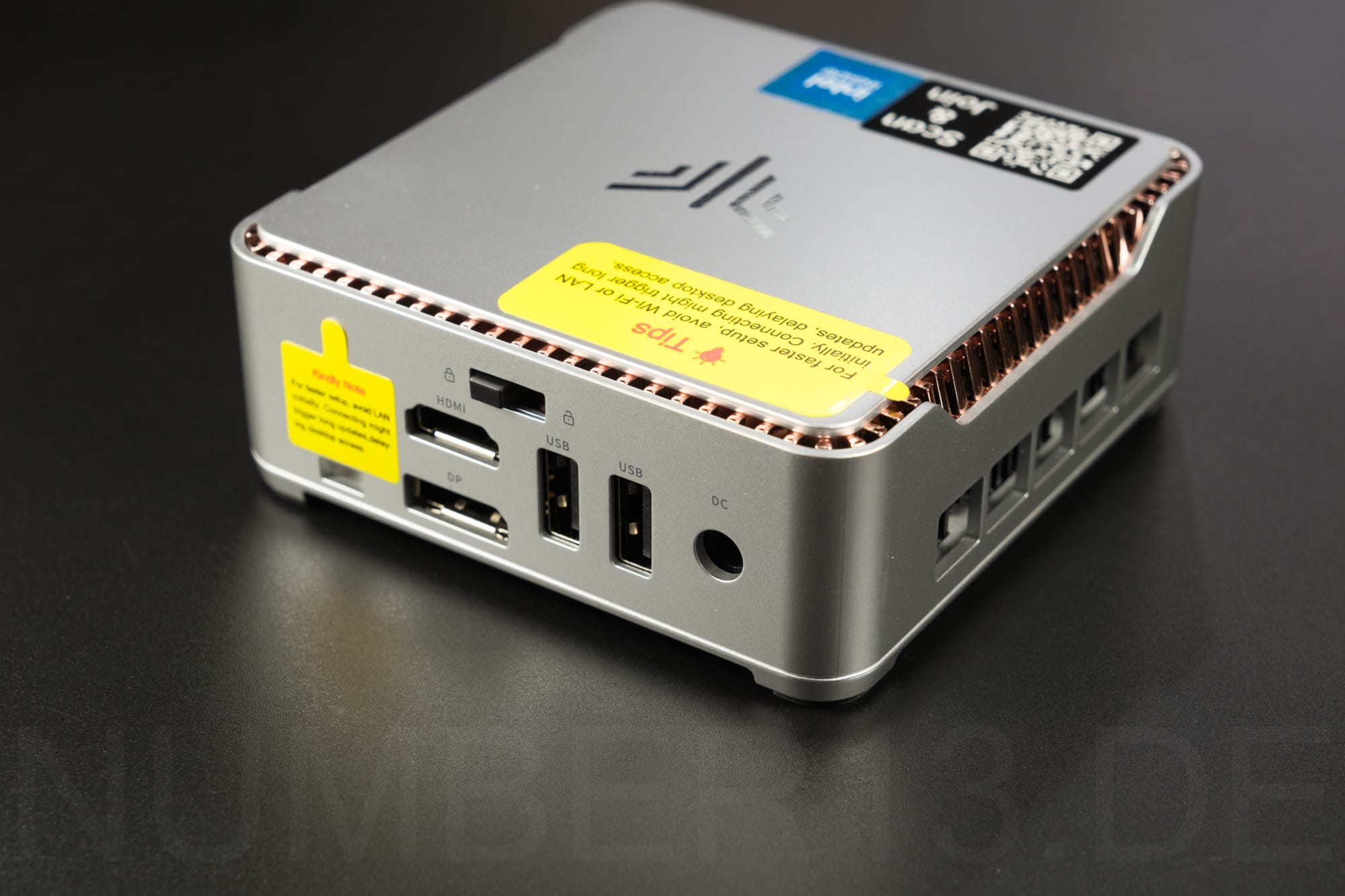
Power consumption
We tested the power consumption of the NiPoGi E2 under both Windows and Linux with a desktop interface.
From most mini PC tests with the Intel N series, we had a bad impression of the power consumption in various scenarios. But NiPoGi did a good job here in combination with the Intel N150 processor. However, I measured a difference between Windows 11 versions 24H2 and 23H2. The E2 was shipped with 23H2, but this version had higher power consumption, so an upgrade to 24H2 is recommended.
| operating system | mode | Performance | Additional information |
|---|---|---|---|
| Windows | Idle (monitor off) | 5.6 W | |
| Windows | Idle | 6.8 W | M.2 SATA |
| Windows | browser | 8-13 W | |
| Windows | HandBrake CPU | 22 W | |
| Windows | Youtube 2k | 10-12 W | |
| Windows | Youtube 4k | 12-15 W | |
| Windows | Youtube 8k | 14-17 W | |
| Linux | Idle (monitor on) | 6.6 W | |
| Linux | Idle (monitor off) | 5.3 W | |
| Linux | Idle (monitor locked) | 5.1 W | |
| Linux | Idle (monitor on) | 6.3 W | Powertop --auto-tune |
| Linux | Idle (monitor off) | 4.9 W | Powertop --auto-tune |
| Linux | Idle (monitor locked) | 4.5 W | Powertop --auto-tune |
| Linux | browser | 12-20 W | |
| Linux | stress test | 19 W |
Energy efficiency
To measure the CPU's energy efficiency, we rendered the Classroom scene in Blender.
| manufacturer - model | Energy consumed (watt hours) | Duration (seconds) |
|---|---|---|
| Geekom AE7 | 5.4 | 302 |
| NiPoGI AM16 | 6.6 | 648 |
| Geekom XT12 Pro | 6.8 | 462 |
| Geekom Air12 Lite | 9.9 | 1826 |
| NiPoGi E2 | 10.2 | 1790 |
| NiPoGi E1 | 10.5 | 1820 |
| BeeLink SEi12 | 10.6 | 444 |
| NiPoGi N97 | 12.2 | 1926 |
| Beelink EQ13 | 13.2 | 1734 |
In our test, the NiPoGi E2 had the same energy consumption as the NiPoGi E1. The slightly better values could be due to the faster RAM or measurement errors.
Selection of components
The SSD and the RAM are from Rayson. There are only a few details available. In the test, both the SSD and the RAM are faster than the components installed in the NiPoGi E1.
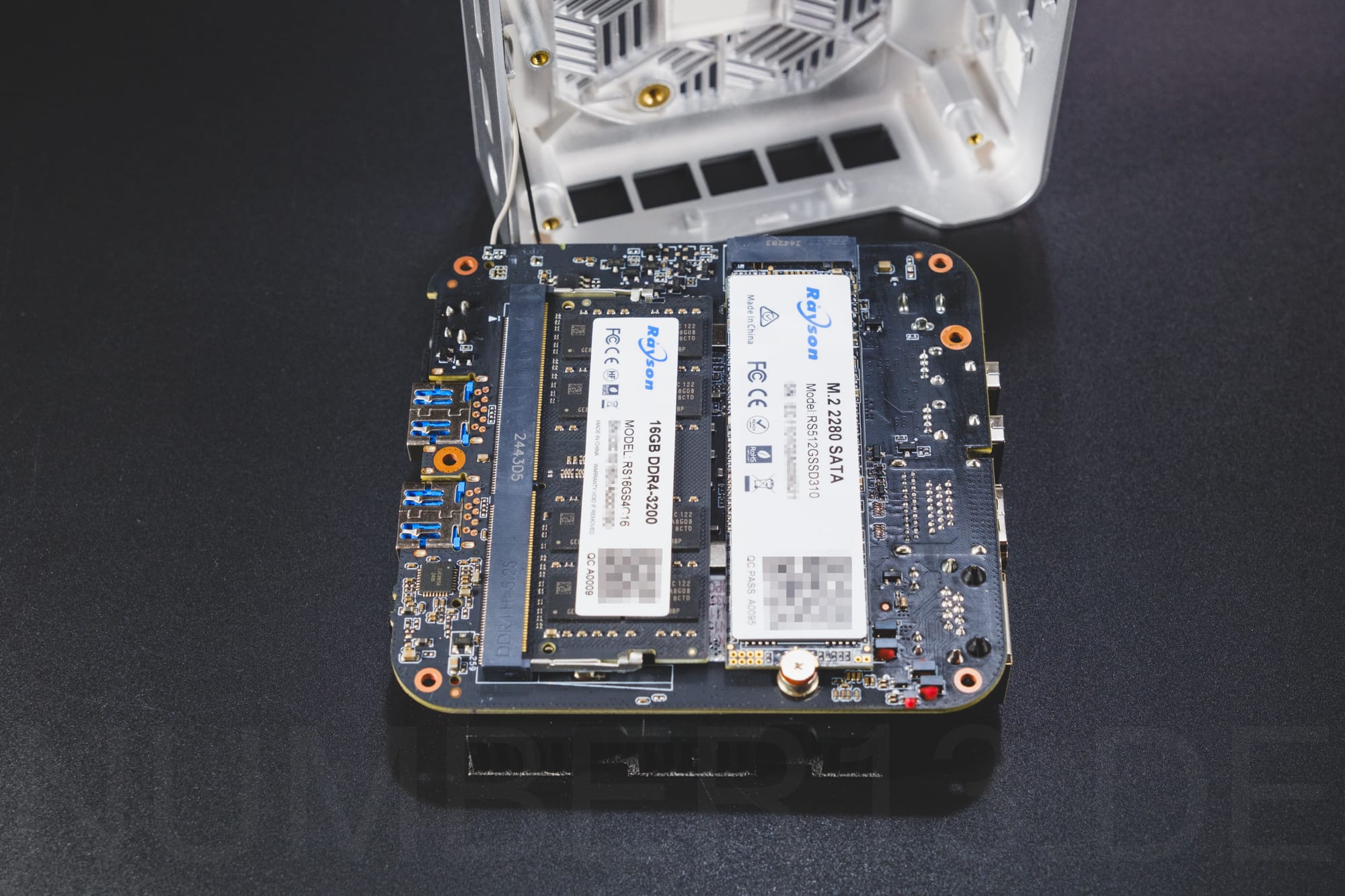
The Gigabit Ethernet adapter and the Wi-Fi 5 adapter are from Realtek.
The Realtek Wi-Fi adapter supports all major standards, but is only compatible with Wi-Fi 5. With a maximum speed of 433 Mbit/s, this is sufficient for most office applications, but is generally slower than modern Internet connections.
Evaluation of the individual areas
| Application | Evaluation |
|---|---|
| office PC | 4 / 5 |
| home server | 4 / 5 |
| Creative tasks | 3 / 5 |
| development environment | 3 / 5 |
| demonstration PC | 4 / 5 |
| media and game streaming computers | 5 / 5 |
| gaming computer | 1 / 5 |
| energy efficiency (low utilization / idle) | 4 / 5 |
| energy efficiency (medium / high utilization) | 4 / 5 |
| volume and cooling | 5 / 5 |
| expandability | 2 / 5 |
| connectivity | 3 / 5 |
| design and workmanship | 4 / 5 |
| drivers and BIOS updates | 4 / 5 |
| price-performance ratio | 5 / 5 |
| overall rating | 3.7 / 5 |
Pros and cons
This category highlights areas that stand out in the mini PC for its price, both positively and negatively, or that deviate from expectations of a mini PC. Only those features that are relevant in the context of the intended use are rated as negative. For example, poor gaming performance in a mini PC/SOC that is not designed for gaming is not considered a negative point of criticism.
Pros
- Quiet operation : Inaudible at low and high loads.
- Expandability : Allows you to swap the NVMe SSD/SATA SSD and memory
- Versatile : Suitable for content creation, office applications, streaming and multimedia
- Design and housing: Small and inconspicuous
- Windows: Ships with Windows 11 Pro
- Energy consumption: The idle energy consumption is low, the energy efficiency is very good for an Intel N-series processor
- SATA SSD: Generously equipped with 512 GB.
- RAM: 16 GB is optimal for most office tasks.
- Network adapters: Realtek LAN and Wi-Fi adapters work with the included operating system drivers in current Windows/Linux versions.
Cons
- Cooling: M.2 hard drives were not taken into account in the cooling concept
- Drivers and BIOS updates: There is no NiPoGi support website
- Wi-Fi adapter: Could be better with more than just 433 Mbps
- Stickers: Affects the aesthetics and is difficult to remove.
Conclusion
The Mini-PC in Use
The NiPoGi E2 is impressive when it comes to office applications. Multimedia applications, games and video streaming are all possible without any problems, and the mini PC remains almost silent.
You should expect slight delays when performing creative tasks in Photoshop, Lightroom or similar programs.
Gaming is not the NiPoGi E2's strong point due to the limited performance of the Intel N series.
The mini PC is particularly attractive thanks to its generous RAM and hard drive, its compact housing and its low price.
Use with Linux/Proxmox is only recommended with Linux kernel 6.11.x/6.12.x or higher, as the integrated graphics card otherwise runs without a driver. This leads to poor performance and high power consumption.
Accessories and expandability
The NiPoGi E2 can be easily expanded for use as an office PC. Almost any M.2 NVMe or M.2 SATA SSD can be installed in the M.2 NVMe PCIe 3.0 x4 slot (occupied by an M.2 SATA SSD).
Additional hard drives can be connected via the existing fast USB 3 ports.
Price and purchase recommendation
The NiPoGi E2 is particularly suitable for office work, streaming and light creative tasks. If you are looking for a quiet, economical mini PC for your desk, this is a solid option.
Buy NiPoGi E2
- NiPoGi E2 - Intel N150 *
on amazon.de
* Affiliate Links: By purchasing from Amazon you support us. There are no additional costs for you when purchasing ❤️
information about the offer
The offer is limited and the price is subject to change at any time.
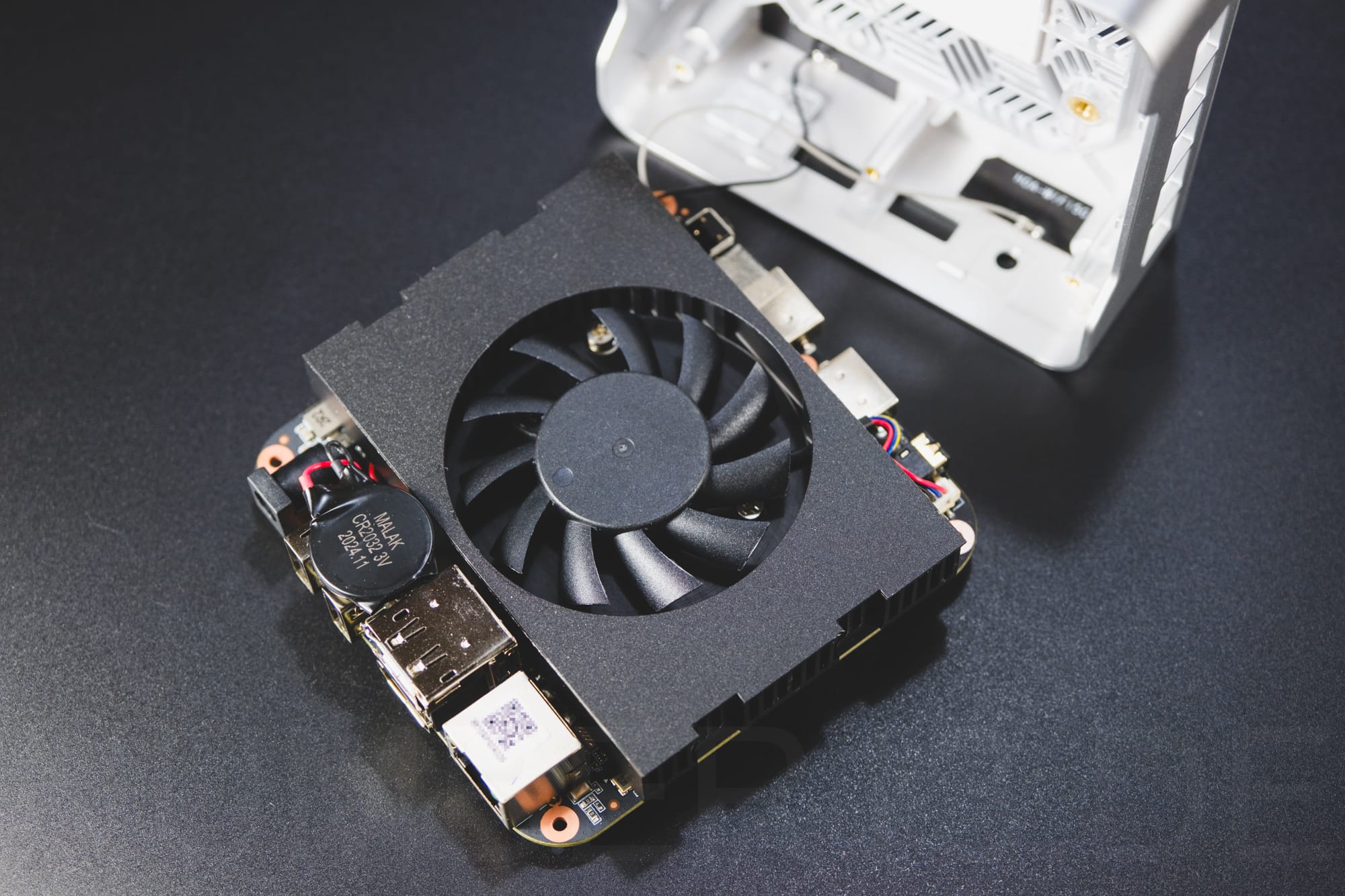


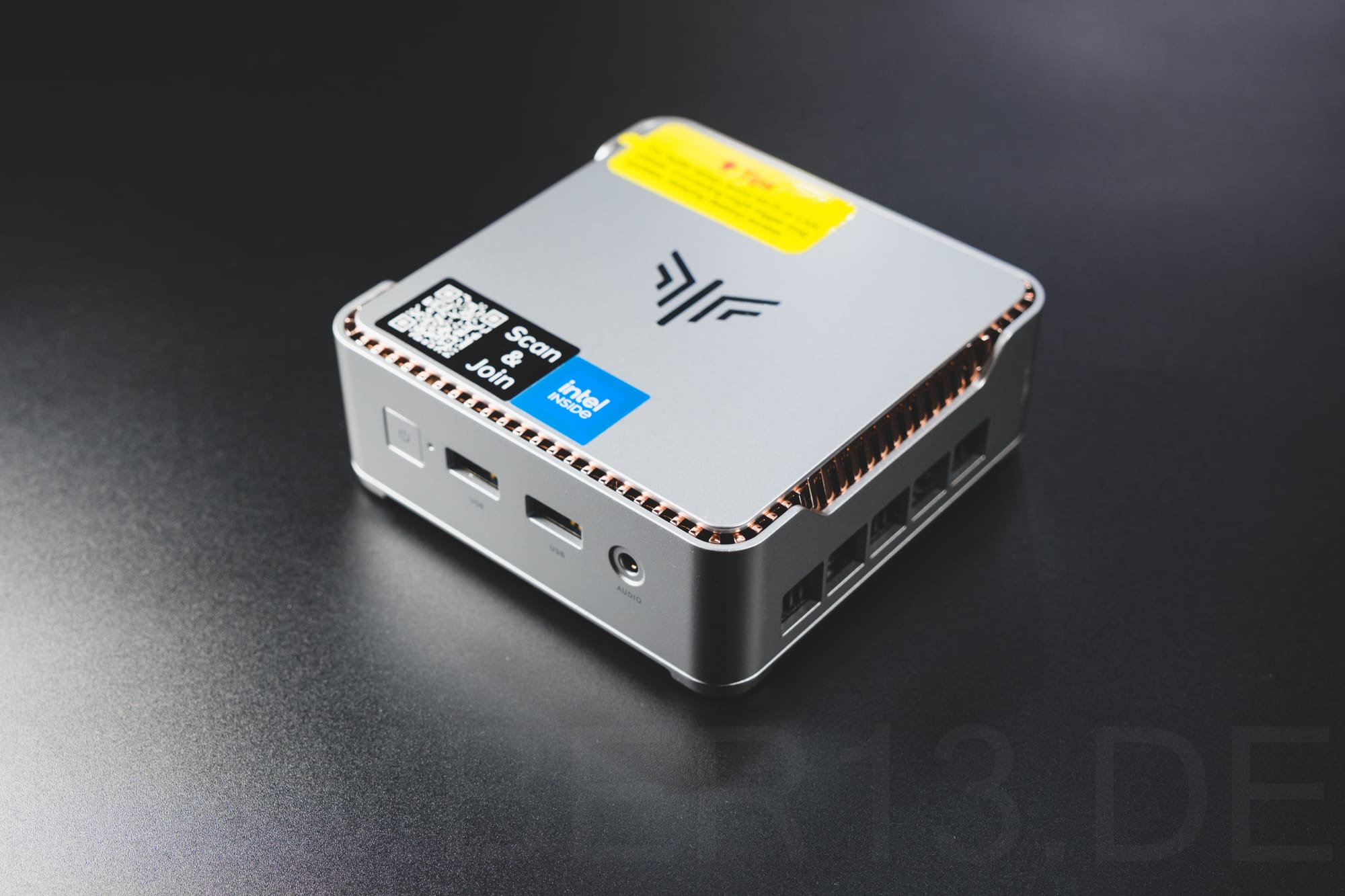
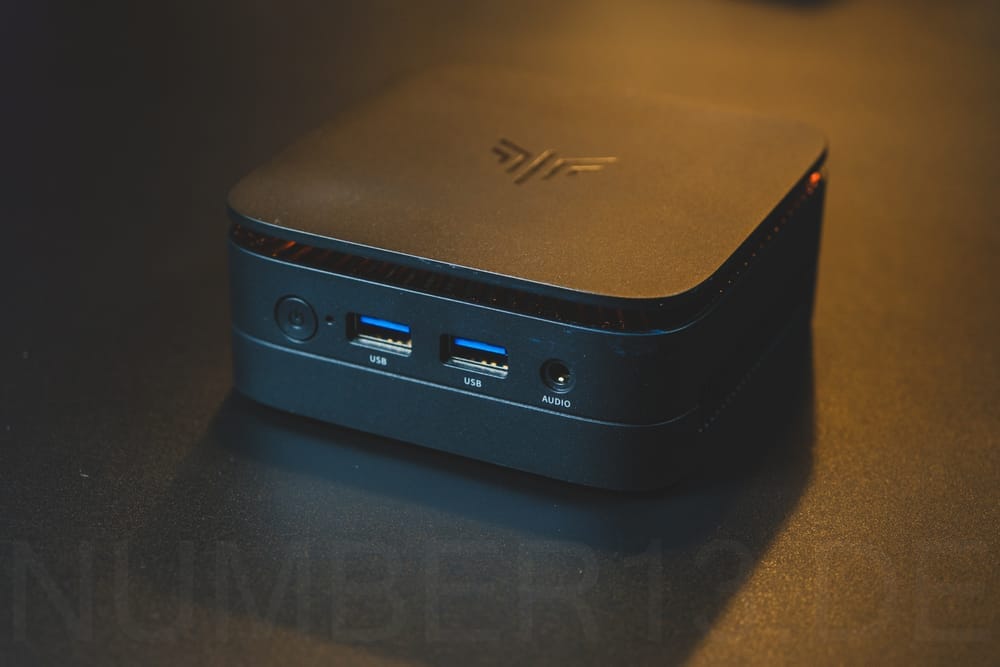
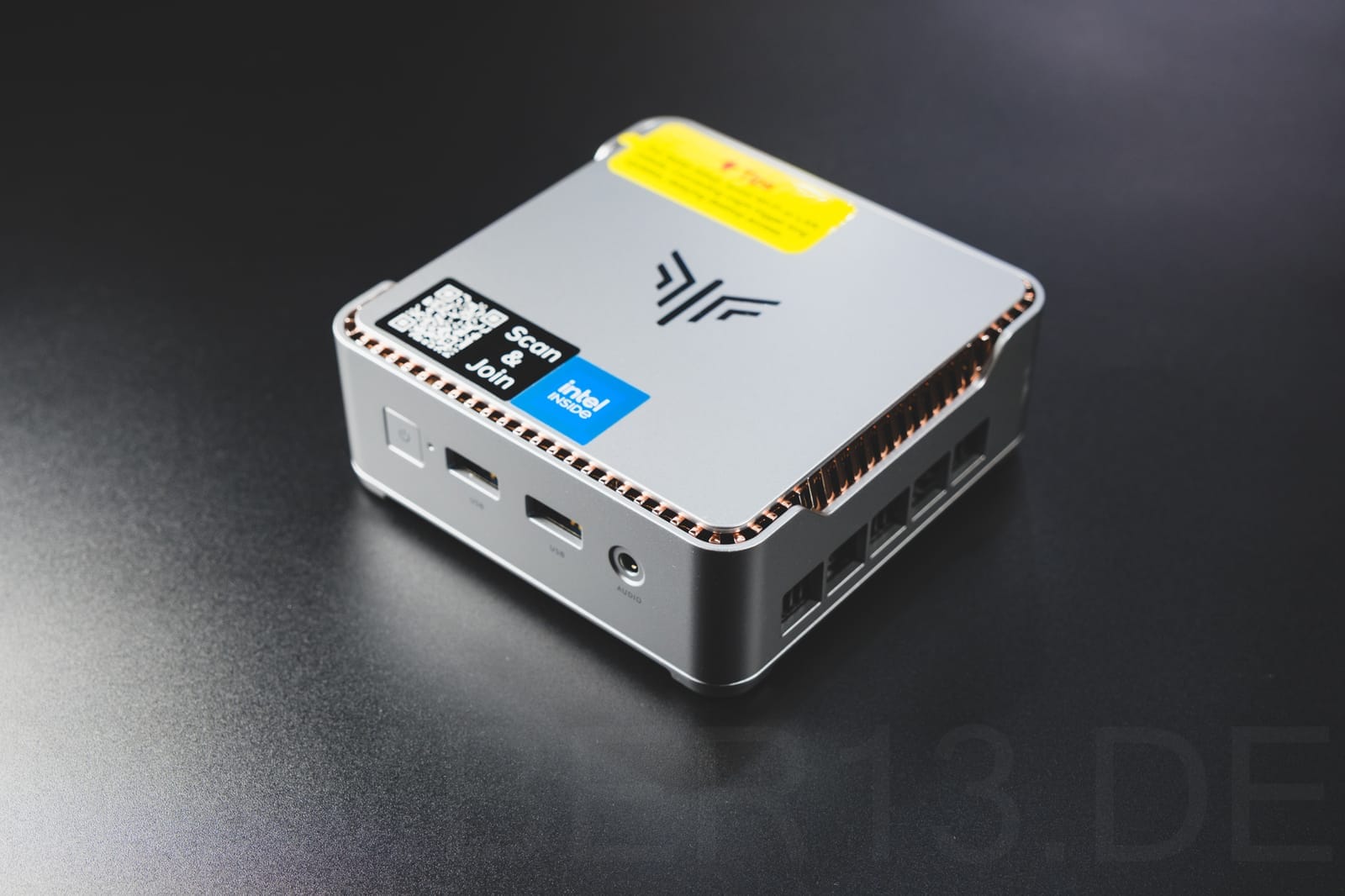
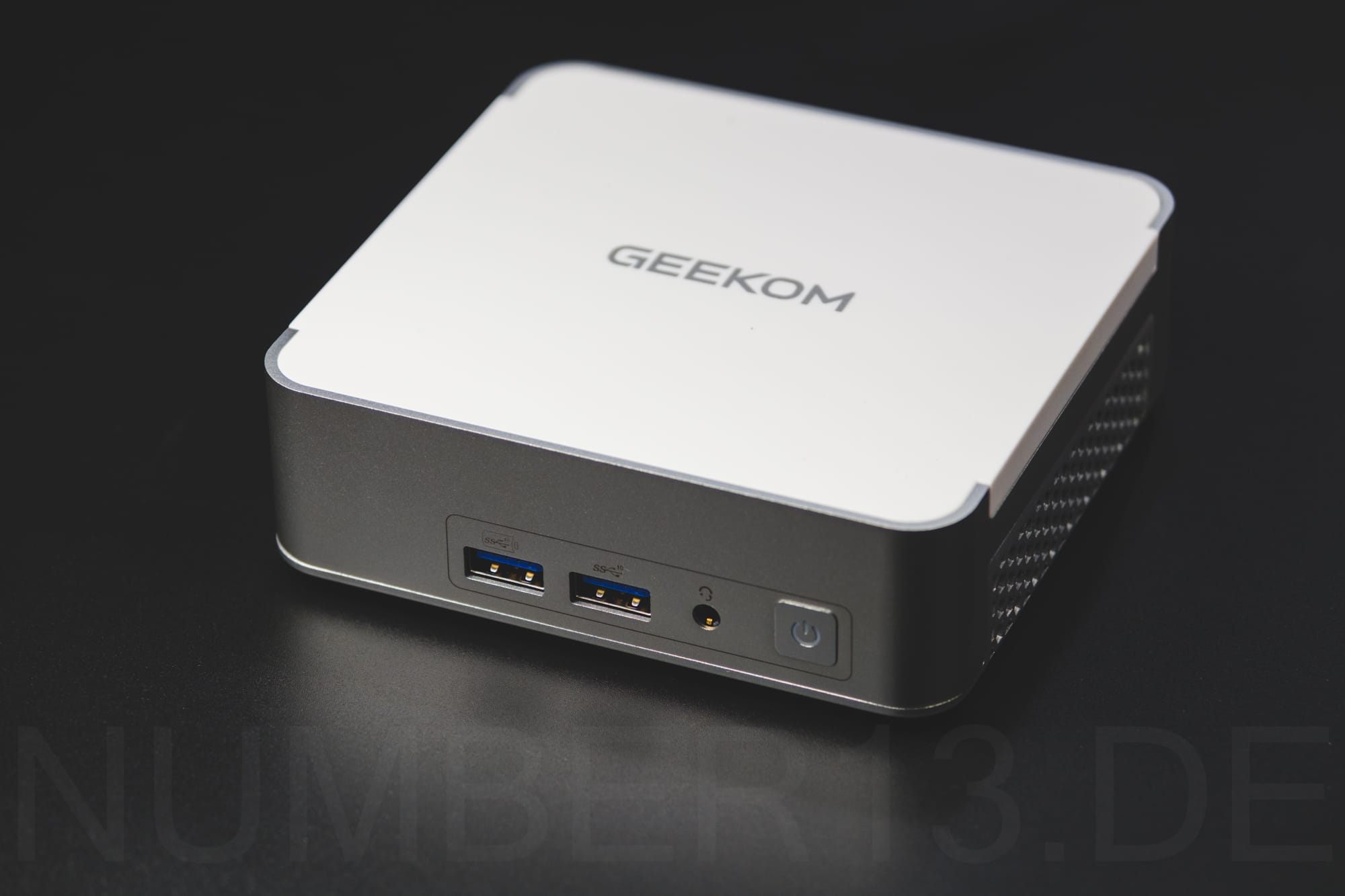
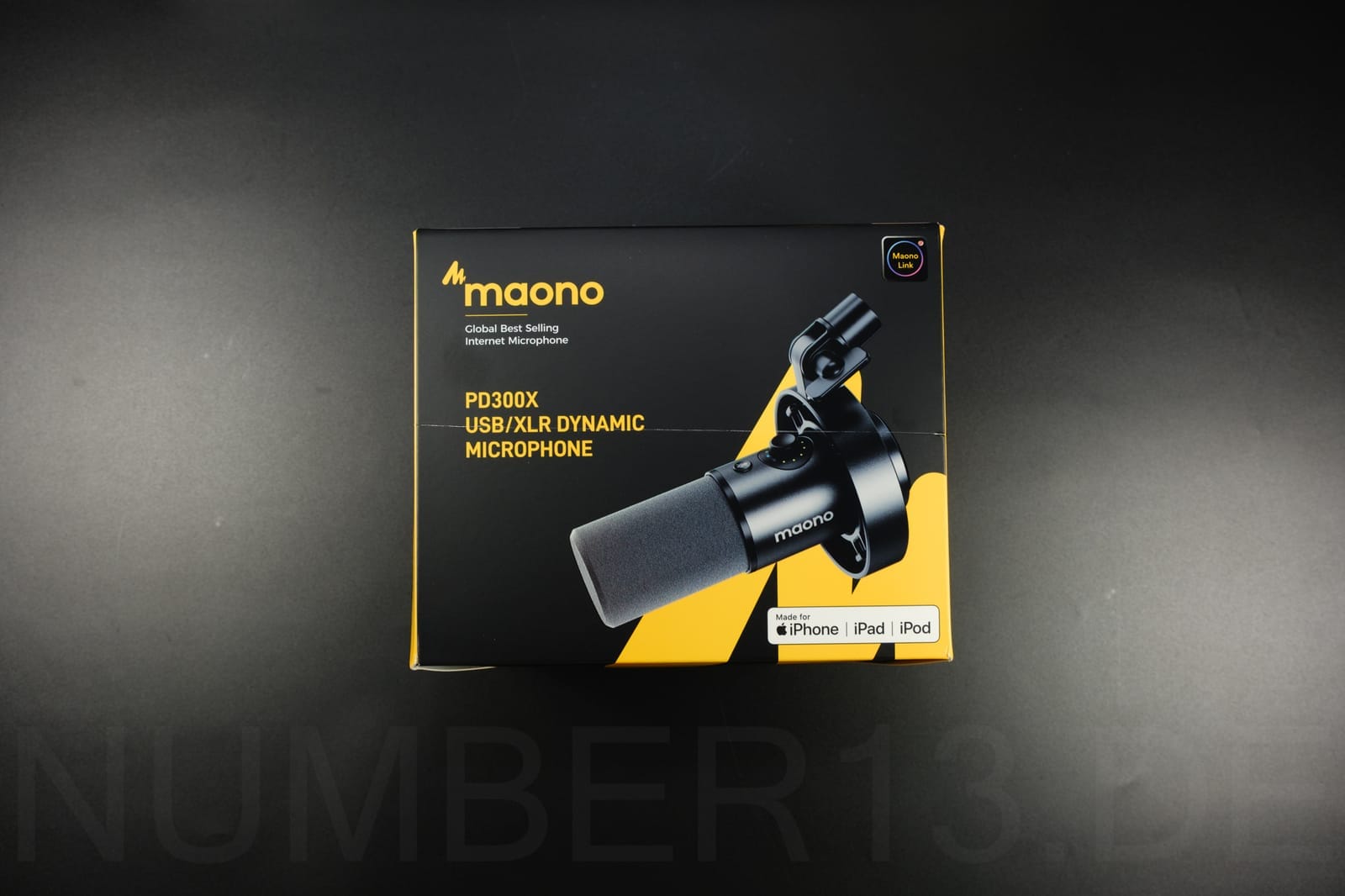
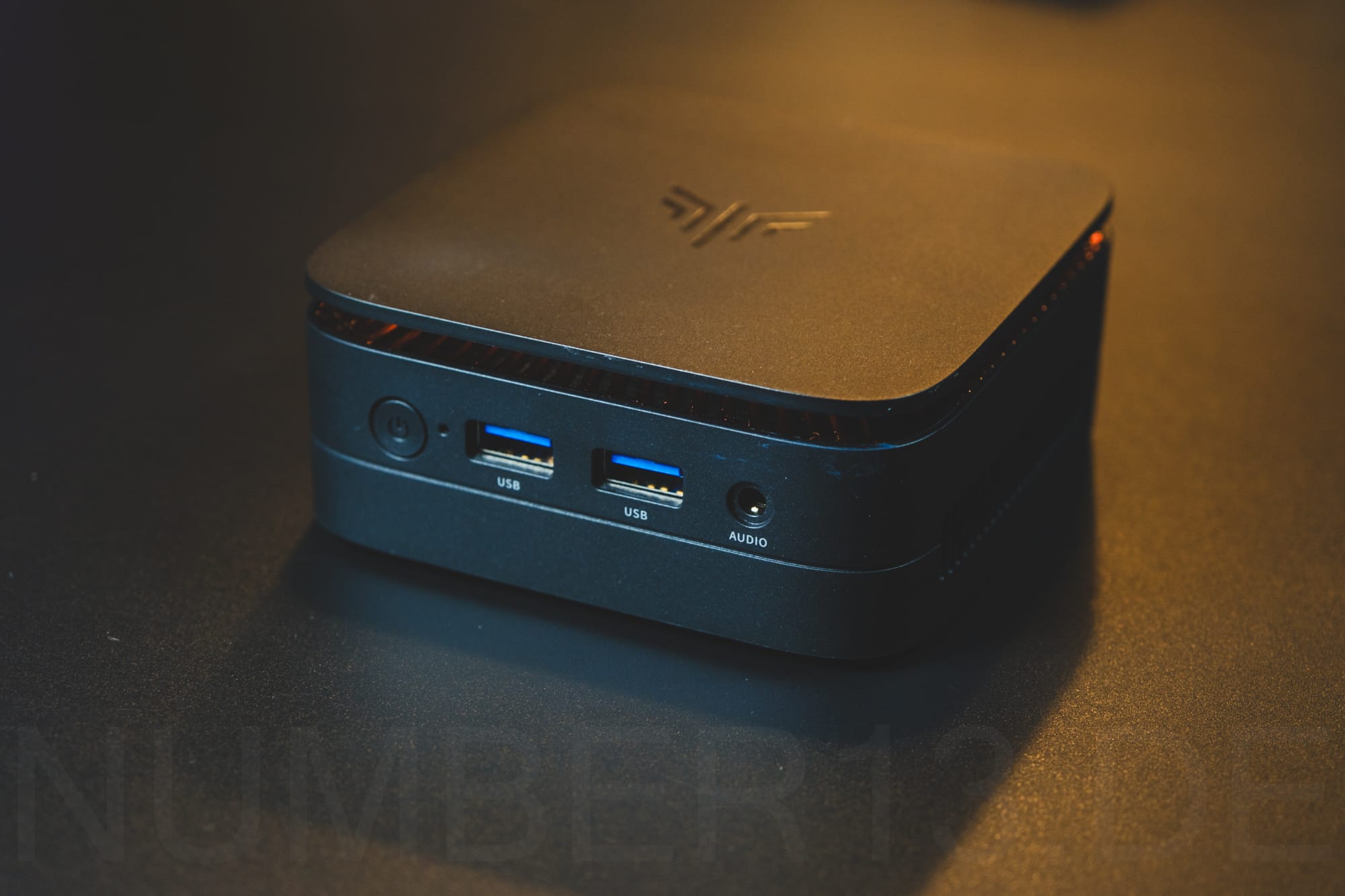
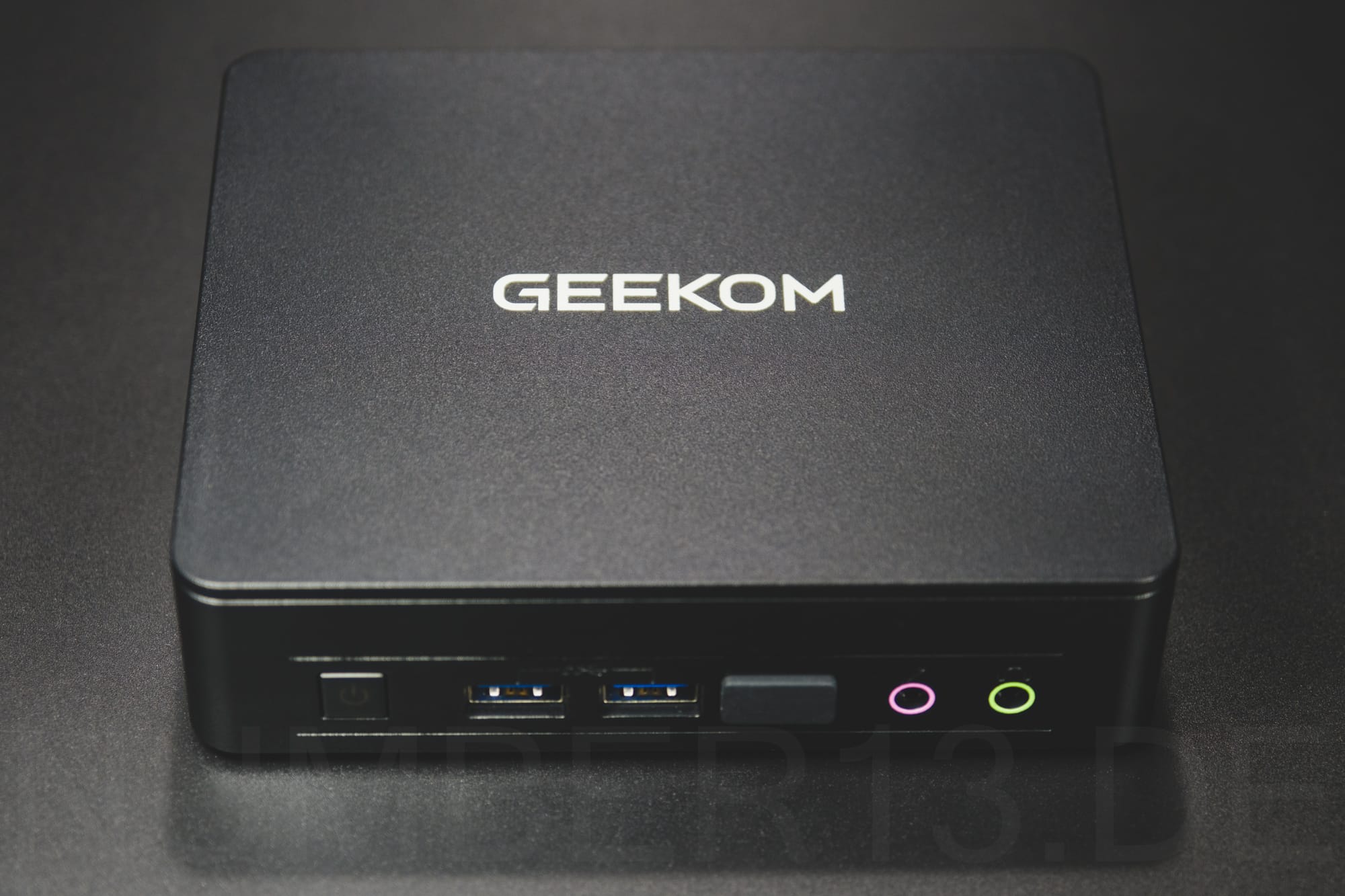
If you press this button it will load Disqus-Comments. More on Disqus Privacy: Link